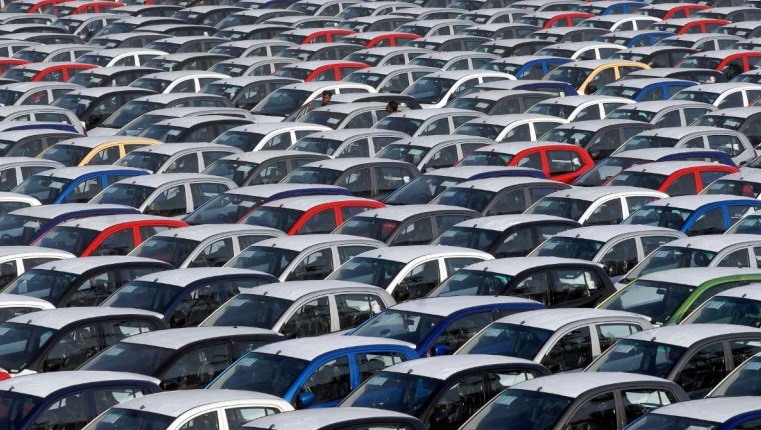New Delhi: Even as Indian automobile industry’s domestic sales performance continues to decline, increased shipments of BS-IV vehicles at attractive prices along with low base effect lifted auto exports to over 17 per cent in November, the third straight month of rise in overseas shipments on a year-on-year (YoY) basis.
Industry insiders and market watchers predict the trend to continue in the coming months to reduce the BS-IV inventory levels.
As per the data furnished by the Society of Indian Automobile Manufacturers (SIAM), the sector’s exports across categories was higher by 17.60 per cent at 411,470 units from 349,893 units shipped abroad in November of 2018.
In October, overall exports had grown by 2.72 per cent.
On the other hand, SIAM data showed the sector’s total sales declined by 12.05 per cent to 17,92,415 units in November from 20,38,007 units sold during the corresponding month of the previous year.
At present, the domestic market suffers from an economic slowdown which is a culmination of several factors such as high GST tax rates, stagnant wages and a distressed farm sector.
“Exports have improved in both two-wheeler and passenger vehicle segment reporting positive traction in markets outside India. The two segments have shown growth of almost 20 per cent each,” said Sridhar V, Partner, Grant Thornton India LLP.
“This healthy traction in exports is a consequence of some of the OEM focus on turning India into a supply hub for markets other than India and have seen acceptability specifically in Middle East, Africa and SAARC regions. It could also be that many are still in BS-IV equivalent and a push in that market is seeing positive results.”
According to Suman Chowdhury, President-ratings at Acuite Ratings and Research: “Many of the OEMs have set up manufacturing plants in India to cater to the demand in South Asian and African nations.”
“With the significant slowdown in the domestic demand, the focus on exports has increased further. Hyundai, Nissan and Kia Motors have seen a jump in their PV exports in November though the volumes are still insignificant as compared to the domestic volumes.”
Furthermore, the data disclosed that passenger vehicles’ overseas sales during the month under review rose by 20.37 per cent to 58,562 units this November, on a year-on-year basis.
In terms of passenger cars, exports edged higher by 13.60 per cent to 39,390 units, while utility vehicle’ overseas sales grew by 38.16 per cent to 18,909 units.
Conversely, exports of the key indicator of economic activity — commercial vehicles — went down by 29.03 per cent to 5,694 units.
The overseas sales of three-wheelers in November rose by 2.04 per cent to 47,827 units.
In the case of two-wheelers, which include scooters, motorcycles and mopeds, exports stood higher by 21.57 per cent to 299,147 units.
The period from April to November 2019 saw the overall automobile exports grow by 3.28 per cent. During the period passenger vehicles and two wheelers exports grew by 5.36 per cent and 6.50 per cent, respectively.
“The growth in two-wheeler exports can be attributed to demand recovery in some key export destinations in African continent as well as Latin America following some stabilisation of macro-economic challenges,” said Shamsher Dewan, Vice President, Corporate Sector Ratings, ICRA.
“Apart from two-wheelers, passenger vehicle exports have also grown by 5.3 per cent during FY2020, supported by OEM specific initiative to leverage on manufacturing capacities available in India.”
Besides, Dewan said that India’s automobile exports are primarily concentrated on nearby markets and developing countries in Africa, Latin America and southeast Asia.
“Accordingly, it is not a reflection of demand recovery in major automobile markets of China, Western Europe etc,” Dewan said.
Nonetheless, Fitch Ratings Associate Director Snehdeep Bohra told IANS: “The trend in November coincides with the fact that OEMs are trying to reduce the BS-IV inventory levels to a manageable limit. In this context they seem to have focused on exports.”
“However, with some automakers expecting a stable domestic market from next year onwards this may not represent a sustained shift towards exports.”
(IANS)
